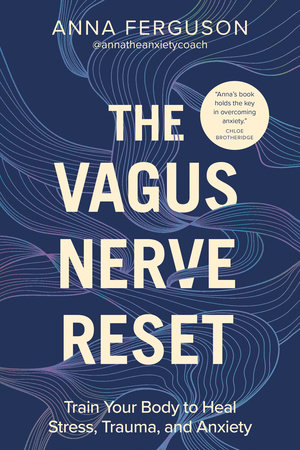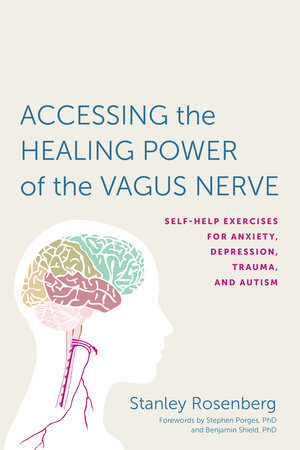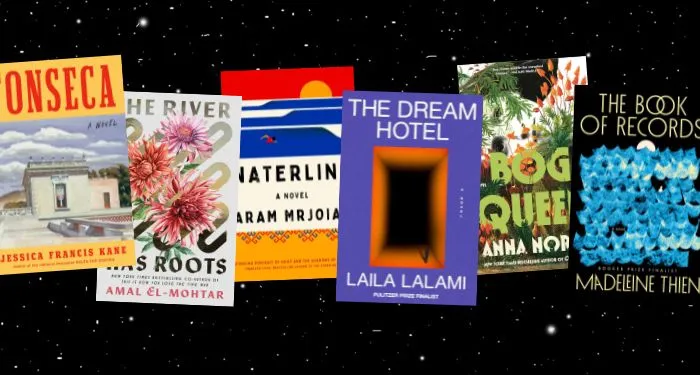Let me start with something I wish I’d known years ago: when your nervous system is dysregulated, “trying harder” rarely fixes it. Breath tightens, sleep slips, digestion complains, and even tiny hassles feel like tidal waves. I stumbled into vagus nerve work after a stretch of restless nights and buzzy afternoons. It felt strange at first–humming, eye gazes, gentle neck stretches–but then my shoulders dropped. Meals sat better. I stopped waking at 3 a.m. wired for no reason. That’s the vagus nerve in action.
The vagus nerve runs from your brainstem through the face, throat, heart, lungs, and gut. It helps regulate heart rate, breathing, digestion, inflammation, and your stress response. Over roughly the last 30 years, several lines of research have brought it from an obscure cranial nerve to a front-row role in mental health and inflammation.
Why does it feel a little like magic, and why are some people skeptical?
Because tiny switches can change big things, fast.
When you take a slow breath or hum, nerves in your face, throat, heart, and belly send “it’s safe” messages to your brain. Your brain turns down the internal alarms. Heart rate eases, your stomach loosens, your shoulders drop. You can feel that shift within seconds, which makes it seem like a trick.
It also feels magical because the switch is hidden. You do not see the “wire” of the vagus nerve, but you feel the whole house get quieter. One small action, like a longer exhale, nudges many “rooms” at once–breath, pulse, muscle tone, and mood. A big change from a tiny move feels special.
On the other hand, remember the contrast effect. If your body has been tight for days, even a small calm-down feels huge. The jump from “buzzing” to “okay” is dramatic, so your brain says, “Whoa.” It is not magic. It is your built-in calm button finally getting a chance to work.
Below you’ll find my personal selected books and workbooks I keep recommending to friends. They’re recent releases mixed with a trusted classics. I’ll tell you who each one is for, what problems it tackles or any specific target group is written for, and why it stood out to me. If your body’s been stuck on high alert, consider this your bookshelf-level reset button.
What are the top Vagus Nerve Healing Books?
Vagus Nerve for Women (Vagus Nerve Healing Book 2), by Adele Payne (2025)
This one is written for women who feel like their system is always “on.” It leans into the reality that female physiology isn’t just a scaled-down version of male physiology. If anxiety spikes before your period, if your energy waxes and wanes with your cycle, or if sleep is the first thing to go when life gets loud, the framing here will feel like a relief. The author centers practical nervous-system resets designed to be gentle, quick, and hormone-aware.
What I like about the structure is how doable it feels on a busy day. Think short, daily plans and simple rituals you can tuck between meetings or school pickups. The focus is on regulating without overwhelming exercises that ease racing thoughts, help you fall asleep faster, and calm a jittery gut. If you’ve tried generic breathwork and felt “nothing,” this book’s cycle-savvy approach may finally click.
Personally, I appreciate the tone. It’s grounded and supportive rather than preachy. The strength of the book is its specificity, it doesn’t pretend one template fits all bodies. That alone makes it a standout starting point for women who want results without marathon routines.
The Vagus Nerve Reset, by Anna Ferguson (2024)
Anna Ferguson writes like a coach who knows you’re tired of sorting through dozens of techniques. The book is a friendly primer on how your autonomic nervous system works and how the vagus nerve shapes your daily reactivity to stress. You’ll see the logic step by step: identify triggers, understand your state shifts, then weave in small, somatic practices that build resilience. It’s practical and warm, designed to be used, not admired on a shelf.
The target reader here is anyone who wants a clear, science-rooted entry point that doesn’t feel clinical. If you’re new to polyvagal ideas, this lands in that sweet spot between “just do this breath” and “read a neuroscience textbook.” Ferguson’s resets are approachable, and the pacing respects real-world life—short practices you can actually stick with.
What made me like it? The organization. You can open to any chapter and find something immediately useful. The strength is how it helps you notice your body’s “tells” and respond early, before you spiral. For people who want to feel a change within days, this one’s a smart pick.
Upgrade Your Vagus Nerve, by Navaz Habib (2024)
If you like metrics and measurable progress, this is your book. Dr. Navaz Habib goes beyond “activation” and gets into heart rate variability (HRV), stressor mapping, and how to track improvements over time. You’ll learn practical protocols, including breathwork, temperature exposure, sound therapy, non-invasive stimulation, and circadian alignment, with an emphasis on what’s likely to shift HRV and vagal tone.
The target audience is the tinkerer who wants a plan. If you’ve already tried basic exercises but want to understand why they work—and how to iterate—Habib lays out the landscape clearly. He connects the vagus nerve to the gut-brain axis, immune function, and mood, then helps you test and adjust, rather than guessing.
I liked how it respects both data and lived experience. The strength is its structure: you can build a personalized “stack” and measure whether it’s helping you sleep better, digest better, and feel less reactive. It’s empowering to see your numbers move as your habits change.
The Polyvagal Theory Workbook for Trauma, by Arielle Schwartz (2025)
This is a therapy-grade workbook that helps you regulate without reliving the worst moments. It’s built for readers carrying the residue of stress or trauma—hypervigilance, shutdown, social anxiety—who need body-based tools that feel safe and incremental. Expect guided practices rather than heavy theory: rhythmic movements, conscious breathing, mindful micro-practices, and journaling prompts to integrate them.
The audience is broad, but I’d especially recommend it to people who’ve tried talk-first approaches and felt stuck. Schwartz keeps the focus on present-moment regulation, so you can build capacity gently. It’s also clinician friendly, with a tone that’s compassionate and clear.
I like how it demystifies “regulation.” The strength here is the stepwise scaffolding—small wins that build into a felt sense of safety. If you want something you can print, write in, and reuse, this workbook earns its spot.
The 30-Day Vagus Nerve Workbook, by Noah Mercer (2025)
This is a simple, day-by-day program for folks who think in checklists. Each day gives you a focused micro-habit—breath, posture, vocalization, cold exposure, or quick body scans—and a short note on why it helps. The design is all about repetition over perfection. If your goal is to “just start,” this setup is friendly and realistic.
Target readers include beginners and busy people. If a 200-page overview feels like too much right now, a 30-day path lowers the barrier. It also works as a reset after travel, an illness, or a stressful season when your baseline slipped.
Why I liked it: it embraces small hinges that swing big doors. The strength is habit design—short actions that accumulate. If you fall off the wagon on Day 12, you can jump back in on Day 13 without guilt.
Vagus Nerve Reset Essentials, by Rochelle Berman (2024)
If you like clear, do-able guidance, this one trades daily journaling pages for straight-to-the-point resets you can use anywhere. It walks you through quick vagus-nerve activations then shows how to fit them into real life when you’re busy or drained. The aim is calm and steady energy without gadgets, meds, or long routines, backed by plain-spoken science with a light touch of spirit.
It’s a good fit if you’re overwhelmed by mixed health advice and want a single path you can trust. The book ties nervous-system basics to everyday issues—sleep, digestive flares, anxious spikes, low mood—and adds food tips, gentle sleep help, and creative focus drills. Short sections make it easy to scan: pick one practice for mornings, one for stress spikes, and one before bed.
What I liked most is the practicality. The strength is how it removes guesswork: do this, feel that, adjust here. The real-life stories help you see yourself in the process, and the tone keeps things grounded. You finish with a simple toolkit you can run on tough days–what to do when worry ramps, how to settle before a hard talk, and how to nudge your system toward rest without making wellness a full-time job.
The Vagus Reset Switch, by Wendy Hayden (2024)
Think of this as a three-month training block for regulation. Short sessions stack into a sustained shift in resilience. If you’ve sampled vagus nerve tools but never stayed consistent long enough to feel durable change, the 90-day arc helps you push past that plateau. Expect repeatable routines that become almost automatic by week four or five.
It’s a fit for people who want structure and time to rewire patterns that took years to form. The longer window acknowledges that the nervous system learns through repetition and safety, not one big breakthrough.
What I like is the cadence. The strength is consistency baked into the plan. You’re never asked to do heroic sessions—just the right kind of “enough” most days.
Accessing the Healing Power of the Vagus Nerve, by Stanley Rosenberg (2017)
This is the veteran of the shelf. Rosenberg’s book is a friendly bridge between Stephen Porges’ polyvagal theory and everyday practice. It explains cranial nerves, social engagement, and how structural tension influences mood and digestion. Then it gives you self-help maneuvers–gentle, non-invasive techniques–to nudge the system toward safety.
It’s ideal if you enjoy understanding the “why” behind the “what.” Readers dealing with anxiety, depressive drift, or stress-related gut issues will appreciate the blend of anatomy and action, plus the sense that you’re learning a language your body always spoke.
What I like most is how confident it makes beginners feel. The strength here is clarity. You come away with a map of your own physiology and a handful of practices that reliably soften the edges.
What actually helped me day to day
I kept failing at long routines, so I tried something tiny after brushing my teeth. Ten slow breaths with a longer exhale, a short hum, then a cool splash on my face and neck. I rolled my shoulders and let my jaw loosen. After a week my mornings felt steadier and those surprise heart-racing moments showed up less often. The win was simple and repeatable.
Good to know: progress can be wobbly. I watched for small signs like falling asleep a bit faster, a calmer stomach, or reading a tough email without bracing. If anything felt off I made the breaths smaller and stopped early. If you have heart rhythm issues or past trauma, go gently and check with a clinician. A quiet phone reminder kept me consistent. One breath, one sound, one posture cue. Easy enough for messy days and still helpful.
Final thoughts
If your nervous system has been running the show, these books and workbooks hand the mic back to you. Some people love data and HRV charts. Others need a gentle, hormone-aware plan that meets them where they are. Some want a therapist-designed workbook that avoids retraumatization. The point isn’t to collect more techniques, it’s to find two or three that you can do most days without dread.
A few fun facts to keep in your back pocket for motivation. The vagus nerve is the longest cranial nerve, connecting brain to gut, heart, lungs, and more. When its “tone” improves, digestion, inflammation, and mood can follow suit. Heart rate variability is a window into that tone–higher HRV tends to reflect better flexibility under stress–and books like Habib’s show practical ways to move the needle. And while polyvagal theory is relatively new in popular wellness, clinician-authors like Arielle Schwartz are turning it into step-by-step practices you can actually feel in your ribcage and breath.
I’ll leave you with what worked for me. I picked one book, one routine, and one moment I knew would be stressful. I practiced before the stress hit, not during. After a week, mornings felt less jangly. After a month, my “uh-oh spike” at email pings was quieter. That’s the magic here, small, steady nudges.
Choose a book that fits your season, make it light enough to do on your messiest day, and give your nervous system a chance to remember safety again. If you are interested in alternative medicene check out also our selection of somatic therapy books.

I am a marketing manager with 5 years of experience. I am passionate about helping businesses grow and reach their target audiences. I was born in Iowa and my hobbies include reading self-help and women's fiction, especially rom-com. In my free time, I enjoy reading, spending time with my family and friends, and traveling (hopefully one day to Italy).




























 English (US) ·
English (US) ·